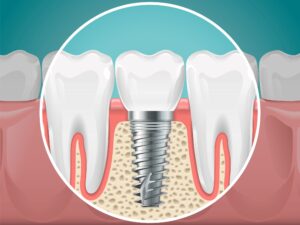
If you’ve lost one or more teeth, simple tasks like smiling, speaking, and eating suddenly become much more challenging. Thankfully, your dentist can rebuild your grin with dental implants. Many providers consider these prosthetics to be the ideal way to replace lost teeth because they come with several unique advantages. For example, they’re the only restoration that’s surgically placed directly into your jawbone for added strength and reliability.
However, dental implants’ journey has been remarkable, from their humble beginnings to their current status as the gold standard in tooth restoration. Continue reading to delve into their fascinating history and discover why they’ve evolved to be so durable and successful!
Ancient Attempts
Many people are surprised to learn that the earliest attempts at replacing teeth can be traced to about 600 A.D. Archaeologists have found evidence of bamboo pegs carved and fixed into human jaws from ancient China.
Historians have also learned that other cultures also tried to rebuild their grins with various materials available to them. For example, around 1,000 B.C., Egyptians used precious metals, ivory, and rare gems like jade to create supplemental teeth. In fact, the first recorded case of a metal implant was found in an Egyptian king around that time.
Early Updates
Unfortunately, human bodies typically rejected the different materials used for rudimentary dental implants because they are not compatible. There wasn’t much progress in their development until the 18th century, when European scientists began experimenting with different alloys of gold and other metals. They still didn’t have any luck, though, and so they often resorted to pulling teeth from cadavers, like those who fell in battle, to refurbish the smiles of the living.
Modern Materials
Finally, in 1913, Dr. E.J. Greenfield began using 24-karat gold for dental implants. Not long after that, two brothers (Drs. Alvin and Moses Strock) tried to make fixtures from Vitallium after they learned it had been used in hip bone procedures. These were more long-lasting, and they’re largely recognized as the first people to successfully place a dental implant into a jawbone.
Implants as we know them may have originated in 1952 when Dr. Per-Ingvar Branemark made a new discovery. He was studying bone healing and regeneration when he placed a piece of titanium into a rabbit’s femur. Later, he was unable to remove it because the metal had completely fused with the bone. He adapted this technology to be used for oral issues and, in 1965, achieved a breakthrough when he replaced a patient’s missing tooth with a titanium implant.
Present Prosthetics
Today, dental implants are more resilient and lifelike than ever before. Modern advancements in dental tools and technology have led to enhanced patient comfort and more accurate results compared to past efforts. Plus, they’re usually capped with a dental crown that’s made from tooth-color porcelain that can resist chips and stains. They can improve your appearance while simultaneously restoring your mouth’s ability to chew and converse more easily.
Thanks to the many mistakes of the past, these restorations currently have a remarkably high success rate of more than 95%. That means there’s no better time than now to consult with your dentist about dental implants!
About the Practice
At Coats Dental Group of Longmont, patients of all ages benefit from a father-son dental duo who work together to offer a full range of services all under one roof. They take the time to get to know you so that when a problem arises, they can quickly come up with individualized solutions to address it. They are experienced in handling everything from basic preventative care to more complex procedures, like dental implants. Furthermore, they utilize state-of-the-art technology to complete the surgery in the office so that you don’t have to seek an outside provider. If you want to replace missing teeth, you can request a consultation on the website or by calling (303) 776-4090.
